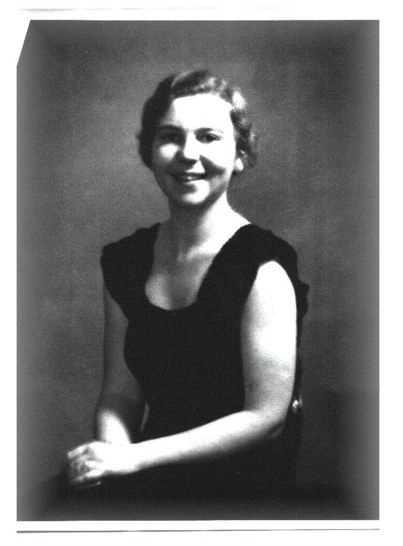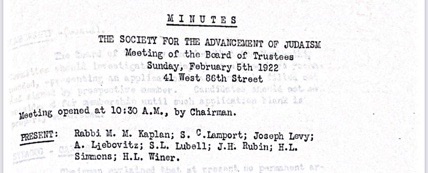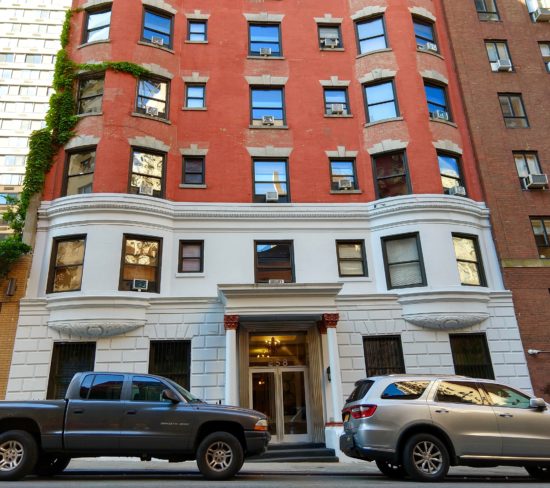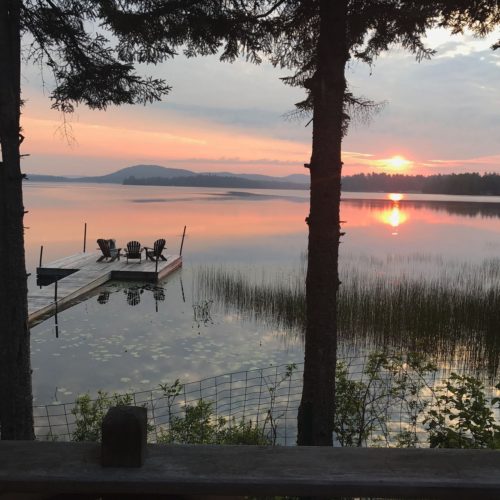
By Ava Stryker-Robbins
The 100th anniversary of the first Bat Mitzvah is being celebrated on March 18th at the Society for the Advancement of Judaism (SAJ), the Upper West Side synagogue where the first ceremony was held. It is located at 15 West 86th Street, between Columbus Avenue and Central Park West.
B’nai Mitzvah (plural for Bar and Bat Mitzvah) are Jewish ritual ceremonies that mark religious adulthood. Prior to 1922, only Jewish boys were allowed to have the service in the United States.
With his founding of SAJ that same year, Rabbi Mordecai Kaplan saw fit to allow his daughter, Judith, to also have the ceremony. He pitched the idea of hosting this Bat Mitzvah at the synagogue he founded, and his board unanimously agreed.

Judith was an ideal first, according to Rabbi Carole Balin, Professor Emerita of Jewish History at Hebrew Union College, who is writing a book about Bat Mitzvah. ”She was her father’s intellectual companion,” Rabbi Balin said in a phone interview. Judith, however, felt ambivalent about it, and strange being different from other girls.
“While it was assumed that all four of us sisters would eventually do something in the world, I was groomed for it with an intensity which quite simply wore out with my younger sisters,” Balin quoted Judith as saying.
She would have to go in front of her entire congregation and do something that had never been done before. Still, she was thrilled that girls would start to have the same opportunities as boys.

Rabbi Kaplan’s decision to hold a Bat Mitzvah in the United States largely stemmed from the passage of the 19th amendment in 1920, which gave women the right to vote.
According to Rabbi Lauren Grabelle Herrmann of SAJ in an interview conducted over Zoom, he was determined to increase women’s involvement in Judaism as their involvement in political affairs increased. In a Zoom interview, SAJ member, former Manhattan Borough President and Upper West Sider Ruth Messinger suggested that his having only daughters could also have played a role.
Before the first Bat Mitzvah, group ceremonial events that included girls were held in Europe. But this was the first individual ceremony where a girl read from the Book of Leviticus—which is found in the Torah—at a service in front of her entire congregation. This Bat Mitzvah marked a direct change in Jewish culture; opening a door that many other Jewish girls subsequently walked through.
Messinger—who attended Judith’s second Bat Mitzvah when Judith was 82, and who herself had become the first Bat Mitzvah at Park Avenue Synagogue on the Upper East Side — cites that Judith’s Bat Mitzvah “likely motivated [her] mother…to raise the question of a Bat Mitzvah at Park Avenue.”
According to Balin, Judith Kaplan Eisenstein was a talented musician who was also an academic genius. She recalls that Judith skipped so many grades that she never learned how to do long division. She went on to become a Jewish educator, composer, and musicologist. Judith passed away on February 14th, 1996 at the age of 86.
Rabbi Sandy Sasso, the first woman to be ordained as a rabbi in Reconstructionist Judaism, wrote in an emailed statement that Judith “believed that synagogues should honor the rich legacy of Jewish music…[and that] everyone could benefit from notated music. [At services] she had all the congregants singing in harmony.”
In order to celebrate this historic occasion, SAJ—in collaboration with the Jewish Women’s Archive—is planning an event called Rise Up, which will be hosted on March 17th at SAJ (and on Zoom.) It will feature a panel with both Balin and Sasso and others.
SAJ’s Rabbi Lauren Grabelle Herrmann says being the host of the first Bat Mitzvah is a source of both pride and aspiration for SAJ, in addition to being a reminder of the risks the temple’s founders took to bring equality to the Jewish community. Herrmann sees this effort as ongoing; “We need to be willing to take those risks to make sure everyone has a seat at the table and an equal voice to shape tradition going forward.”










Love that this article is published on the first day of Women’s History Month! A signature event!
Wow, I didn’t realize how recent the tradition was. Interesting story!
It is fitting and appropriate that SAJ hosted the first Bat Mitzvah as a religious institution that reveres community and inclusivity.I look forward to celebrating the occasion.
I was a student at the the S.A.J.Hebrew School in the 1940’s and 1950’s. As I recall Judith Eisenstein was also the first woman in history to be called to the Bimah (the platform where the Torah was read) for an Aliyah. The honoree recites the blessings before and after a section of the Torah is chanted. This may have been at the Bat Mitzvah of her daughter Miriam. My mother Miriam Fox was the second woman to receive this honor at my Bar Mitzvah in March 1951
When I was Bat Mitzvah (called Bas Mitzvah then) in 1955, only Conservative synagogues allowed such events. Girls were called up on Friday nights, not Saturday mornings at Temple ‘Emanuel in the Bronx.
It should be noted that Mordecai Kaplan had a very long (50+ years) tenure as professor at the Jewish Theological Seminary, originally a modern Orthodox institution, but for more than 100 years the site of training rabbis in the Conservative movement. As professor of homiletics, the art of preaching or writing sermons, R’ Kaplan taught virtually every Conservative rabbi for a couple of generations. It is not surprising that many of them were influenced by Kaplan and followed in his path with such innovations as Bat Mitzvah. Further, for much of that period, Reform Judaism’s preferred rite of passage was confirmation for young men and young women, and no Bar Mitzvah for the boys.
The other historic part of this story is that it was a major factor in rabbi kaplan leaving The Jewish Cener ushering in the arrival of Rabbi Leo Jung and a successon of great Rabbis.
Reception at Leonard’s of Great Neck?
This is really fascinating. I know Judith is no longer with us, but I’m curious if her children and grandchildren (if she had any) are still in NYC/the neighborhood?
She is survived by two daughters. One lives in the DC area, the other in Brooklyn.
Learned so much from this very well written article!
I understand that Judith’s grandmothers sat in the kitchen, begging her mother not to let her go through with it.
I broke the glass ceiling in Philadelphia in 1976 at 46.
This is a very moving story about the evolution and continuation of Jewish life, a marvelous tradition.
Glad to see this story! I’d never heard of Mordecai Kaplan or Reconstructionist Judaism until seven years ago (late in adult life) when I joined the Reconstructionist Temple West Side Synagogue (WES), which ironically I tried on a whim after an Aug 2015 story on West Side Rag about them! The movement is a fascinating history. It’s my understanding that the founding members of WES included several of Kaplan’s children (and many other prominent NY intellectuals), one of whom was the first woman ever to become bat-mitzvah anywhere — an innovation of Reconstructionists that is now common in Jewish communities everywhere!
Sorry-typo. I meant to write West End Synagogue.